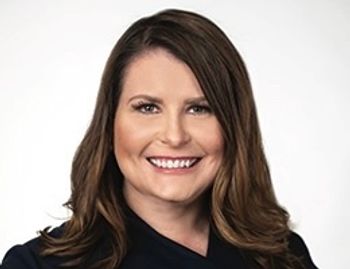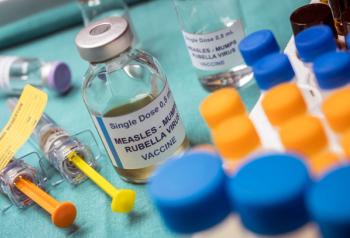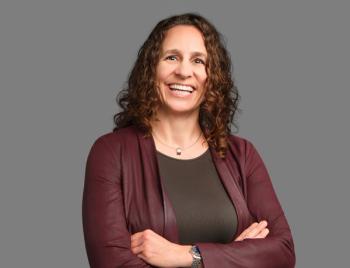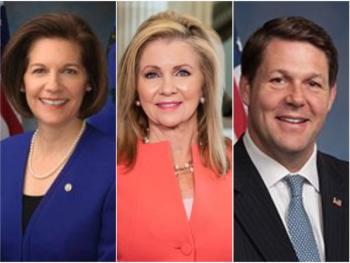
AMAZE Seeks Better Outcomes Through Digital Health, Driven by Clinicians
AstraZeneca and MGH announced their digital health partnership earlier this month, saying it would allow them to pair a patient app with a clinician dashboard to deploy remote patient monitoring and evidence-based patient care.
Digital health has exploded over the past decade, from health technology meetings such as HIMSS and at major scientific conferences, as well as the consumer sector, as seen in best-sellers like the Apple Watch. Projections for the size of the global market are huge, with
Enter AMAZE, AstraZeneca’s disease management platform, which will be part of a collaboration with Massachusetts General Hospital (MGH). AstraZeneca and MGH
To learn more about AMAZE, and what makes it different from earlier digital solutions, Chief Healthcare Executive™ spoke with Karan Arora, MBA, chief commercial digital officer for AstraZeneca.
This interview has been edited lightly for clarity.
CHE: Could you give us a brief summary of what AMAZE is and why represents a step forward in chronic disease management?
Arora: We know that 97% of chronic care management happens outside of a clinical setting. Our vision is to provide better evidence-based care to patients, and instead of it being episodic, it should be proactive—and it should be driven through data. So, this is a wider monitoring platform coming into play.
CHE: We've been hearing more and more about remote monitoring, especially during the pandemic; as you said, most chronic care management doesn't happen in the doctor's office—it happens when the patient is by himself or herself. We've been hearing about this for several years now, so obviously a lot of science went into AMAZE. Could you walk us through the process that led this point of launching the program with MGH?
Arora: Three parts went into AMAZE, if I could just put them in buckets. One is the clinical thinking. Instead of taking an approach to just launch a digital app, and be technology driven, the approach was, “What actually drives the best usage for patients and delivers both efficient outcomes and also efficiency for the clinicians that treat those patients?” That was the fundamental North Star that was common for MGH and for us.
The second thing that went in this is understanding, “What are the gaps that exist with remote monitoring today?” There were two: one was that the number of users or patients using these digital applications is low, and reuse is also very low. And second, we find with healthcare providers that they don't like it, because it's fragmented. When the data come to them, it seems like more work than less. So, we had to solve for those challenges as well.
The third element was the business model doesn't really exist today. If you ask the providers to pay for remote monitoring, they want to use it, but then have no money to pay for it. You have to solve for adoption. And then for the payers, the market is still developing where they're reimbursing, so it is not widely in place. We have a couple of plans that are starting to reimburse for remote care, but it’s not happening at scale. You have to solve for that gap and make sure you drive the incentives for adoption.
CHE: It sounds like one of the problems you’re trying to solve is one we’ve seen in studies—people will often adopt a digital therapeutic or mHealth solution initially, but then there's a drop off. Can you talk about innovations you are making to address this?
Arora: First, we have found that instead of going at it with the B2C route, which is what a lot of the digital health companies have done—they’ve gone directly to the consumer, and then vertically integrated and had to add clinicians. We actually took that learning and said, we have to start with the clinician. So, we integrated the platform into the electronic health record (EHR). It is part of the existing clinical workflow—there’s not a separate web app, there's not a separate application that clinicians need to look at. Second, we made sure that the clinicians were the ones that were onboarding the patient on to the application. It didn't feel like, “Hey, you need to go download this digital app,” it was more, “This is the continuation of how your care is delivered going forward.”
As a patient is discharged, for either a heart failure patient or asthma, the person is told, “This is how the clinician will remain in touch with you.” Because a clinician is giving it to the patient, the level of use and reuse is much higher. Typical usage rates are about 3% to 5%, but we're finding users rates closer to 60% to 70%.
Second, the patient doesn’t experience the platform as a black box. As soon as some information is put into the app by the user, it goes into the clinician portal, which has a series of algorithms that are clinician derived; based on those algorithms, there is risk stratification that [reacts based on the] condition. There’s someone physically looking at this and interacting with the patient, based on the condition, in a timely manner, and that’s closing the loop. It really drives the usage high, because the patients feel that, “Oh, someone's looking at this.” This is unlike other digital health interactions, where you put in information, and sometimes you get no response or an automated response.
CHE: If it integrates into the EHR, that's hugely helpful. It’s still an app, and the patient still inputs data on the phone, but they get the immediate feedback that somebody saw their data.
Arora: Within the dashboard, the clinician gets a view of all the patients assessed against the risk criteria that they have inputted. If patients are flagged, clinicians can click and look at all the patient data, both what’s been collected from the app or from any connected device, including their EHR data in one longitudinal view. So, it gives them a full assessment of their patient—they can assign it as part of a case, they can chat with the patient, right from the platform, or they can examine the information to follow up or schedule them to come in. And all of those components are right at your fingertips. So, it makes the clinical workflow very efficient.
CHE: Does the platform talk to other apps or devices that the patient might be using already, like a Fitbit or an Apple Watch, or their Peloton?
Arora: At the moment, it doesn't. Given that you're treating these chronic patients, one of the core things the clinicians said was they didn't want a lot of false positives. So, say you use an Apple Watch—remember the
CHE: You selected heart failure and asthma as the conditions to start the collaboration with MGH. Why were these conditions selected?
Arora: These conditions represent the some of the top cost burdens in the health system and, second, they are very different in the way they're treated. With asthma, it's managed as a life disease. When patients are discharged [from a hospital], it’s mainly when they're having episodes or exacerbations. If they need to tweak or change therapy, it’s a shift from a steroid to a biologic. By contrast, a heart failure patient is quite comorbid, and there are a lot of interdependencies.
We wanted to test one disease state that perhaps was a little less complex like asthma, and then test one that was significantly more complex that has many underlying conditions. We were trying to see if we could handle those different clinical experiences with a unified application. Today, many of our chronic patients must deal with multiple applications—they have a diabetes app, they have a renal app, they may have an asthma app if they're comorbid. One vision we had when we created the platform is that if you chronic disease with comorbidities, you will only have to deal with one application.
CHE: One other thing I wondered—when you test heart failure and asthma, you're capturing heart failure, which tends to be an older group, whereas asthma can be many different age groups. Was that part of your thinking as well?
Arora: Absolutely. From a human factor standpoint, your patient profiles are different. What we're finding with the heart failure patients is many times it's the son or the daughter or daughter-in-law or son-in-law who's actually helping do it for them. For some, the digital savviness is not there, What is surprising, however, is although the initial hypothesis was that older patients may not be able to use the application, sometimes their digital savviness is pretty good. Many times, we find inequities—sometimes people of color or those in low-income communities may not have access to the internet or a mobile phone. Some of the thinking at MGH is, how do you partner with governments to provide local subsidies, in addition to digital monitoring, so there’s a phone that’s offered at discharge or they’re being offered internet on the spot? So, those are things I don't think we have solved for, and that's an industry issue, frankly, with any digital solution.
CHE: What does a successful pilot look like? Are you going to measure by engagement levels?
Arora: There are three things: For the patient, we're looking at usage, which is, to your point, engagement levels. Are they using it? What's the drop off looking like? We know the industry benchmarks. If we do anything north of that, that’s success.
For the physicians, we're looking at operational efficiency. Has this saved them time? Did it help them risk-stratify the right patients so they can proactively deliver care to them? Does it help sort (or stop) episodic treatment of chronic patients; for example, the heart failure patients discharged [from] coming back at 30- 60- 90-day intervals? If the patient is actually showing risk at 10 days, let's bring them in, versus the patient that is showing no risk. If there's no need to bring them in at 30 days—you can do just remote checking.
Finally, there are some anecdotal clinical inputs we want to see—that the physician looked at the data and changed clinical therapy to optimize the outcome for the patient. Did we see reduction in hospitalization, or did we see readmissions go down? All of this is measured versus control of patients that are not using the remote monitoring platform. So even though it's a quality study, we can pick up on that through the PRO questions of to the clinicians.
CHE: So, you have you have the PRO questions built into the process as well?
Arora: We have technical validated PROs for these use cases. We're also picking up some quality of life data like for asthma patients. We know whenever they do a log, we know exactly what ZIP codes they are in, what are the weather conditions, what is the humidity, the pollen counts, all of that is shared back with a physician so they can know what may have triggered the event.
And diagnosed further into that, with heart failure patients, we have integrations with some devices that look at weight measures and heart rate, because we know fluctuation in weight is a high-risk factor for heart failure patients that have just discharged. For these different use cases are different elements. But we collect both PROs and some other biometric data, as well as some other quality of life data that provides a full longitudinal data set back to the clinician.
CHE: Have you learned from the taper off phenomenon? Have you learned from some of the other projects about strategies for what to do when patients start to lose engagement? How do you keep them engaged?
Arora: Yes, we have learned. There are a few that we should assume already: once patients start feeling better, they stop engaging. It’s the same issue we have with medication adherence—as soon as you take medication and you start doing well, you don't finish your dosage, and then potentially, you still get sick, which is why adherence and compliance is a big issue in the industry.
With digital therapies or digital health applications it’s the same challenge. You have to do behavioral modifications within the applications themselves. And you have to create incentive mechanisms. There are two ways to do that. First, you drive personalized content. You’ve got make sure that based on what they are dealing with, whether it's social content, behavioral content, disease content, you have to tailor that content. We’re looking at ways to tailor content to the patient to make it more usable for them and then to trigger incentives. So, if they don't log in, we're sending triggers for them to come back and log in, or we're sending a direct clinician text, “Hey, we haven't seen any data in the last three or four days, please check back in. Is everything okay?”
If that doesn't drive it, and we're trying to provide some gamification in the platform itself. It's still early, and we're trying to modify it as we learn. But the idea there is just like your Apple Watch, how many days you have gone logging in information? Or did you meet your streaks for the day in terms of logging in, or are you giving them kudos for completing an activity. Apple, Noom—all of these platforms have done phenomenal jobs around behavioral modification triggers and incentives. We've learned from those, and we're trying to incorporate some of those same elements.
CHE: Well, I do take days off from my Apple Watch, I have to admit. … We’ve covered a lot of ground. Is there anything we haven't covered that you'd like to add?
Arora: What's unique here is that we started with a clinical focus on how to drive better outcomes for patients and then reverse engineered on how we would deliver that to the right experience and tools and platforms. That’s why this partnership with MGH is unique. Both MGH and AstraZeneca pride ourselves on clinical expertise. We're not digital people, nor are we IT experts. But what we knew is, “How will drive efficiency in a remote monitoring situation? And what are the elements that are needed for the clinicians to provide the best care? And what are the elements needed for the chronic patients to actually manage their care most efficiently? And once we figured that out, that’s what we built into the platform to go test. What makes me hopeful as our North Star is patient outcomes. And if we stay true to that, then the technology will do its work.






















































































